Sakharov freedom walk. Landscape architecture in the service of European values such as transparency, diversity, & inclusivity
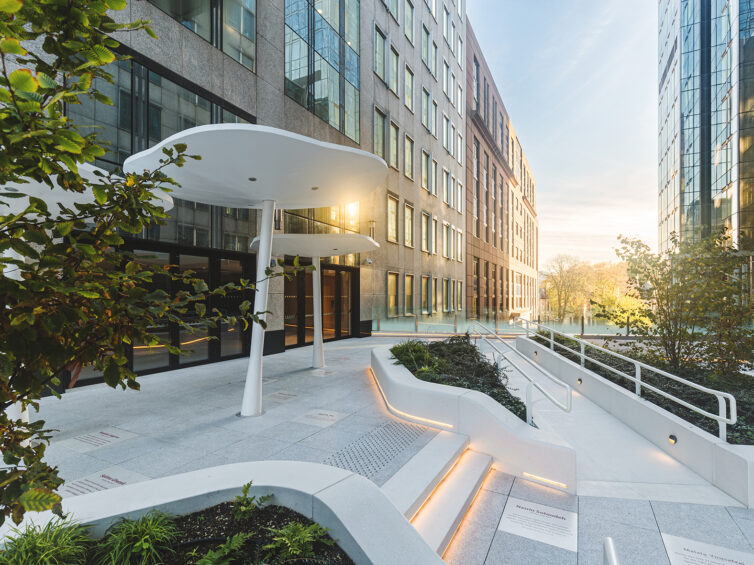
Sakharov freedom walk. Landscape architecture in the service of European values such as transparency, diversity, & inclusivity

Commissioned by the European Parliament, the Zweig Visitor Centre is a project designed to welcome visitors from various nations and guests invited by members of Parliament to showcase and highlight the missions of the European Parliament.
The project is the result of a complex integration combining architecture, interior design, and landscape architecture, all while ensuring the expression of European values such as transparency, diversity, and inclusivity.
The project involves the development of 11 conference rooms, a back office area, and a security checkpoint at the building entrance, along with the creation of a new access point on the Montoyer façade via a newly developed outdoor space on the deck.

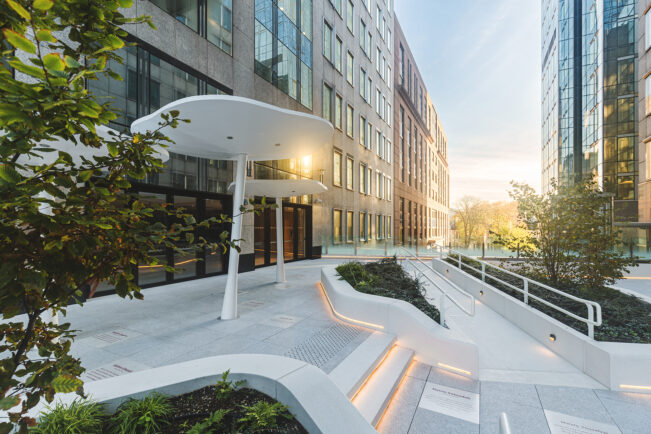
| program | development of the Sakharov esplanade providing a welcoming space at the visitor center, featuring an agora & seminar rooms |
| client | Parlement européen |
| address | rue Wiertz, n°60 • 1000 Bruxelles |
| building type | work |
| status | completed |
| expertises | landscape designurban design & planningproject managementconstruction management |
| offices | brussels |
| size | 400 sqm |
| team | • client: European Parliament • contractor: BBNE • structural engineering: Sweco • fluid engineering: Sweco • technical engineering: Sweco & Fi Engineering • landscape design: assar architects |
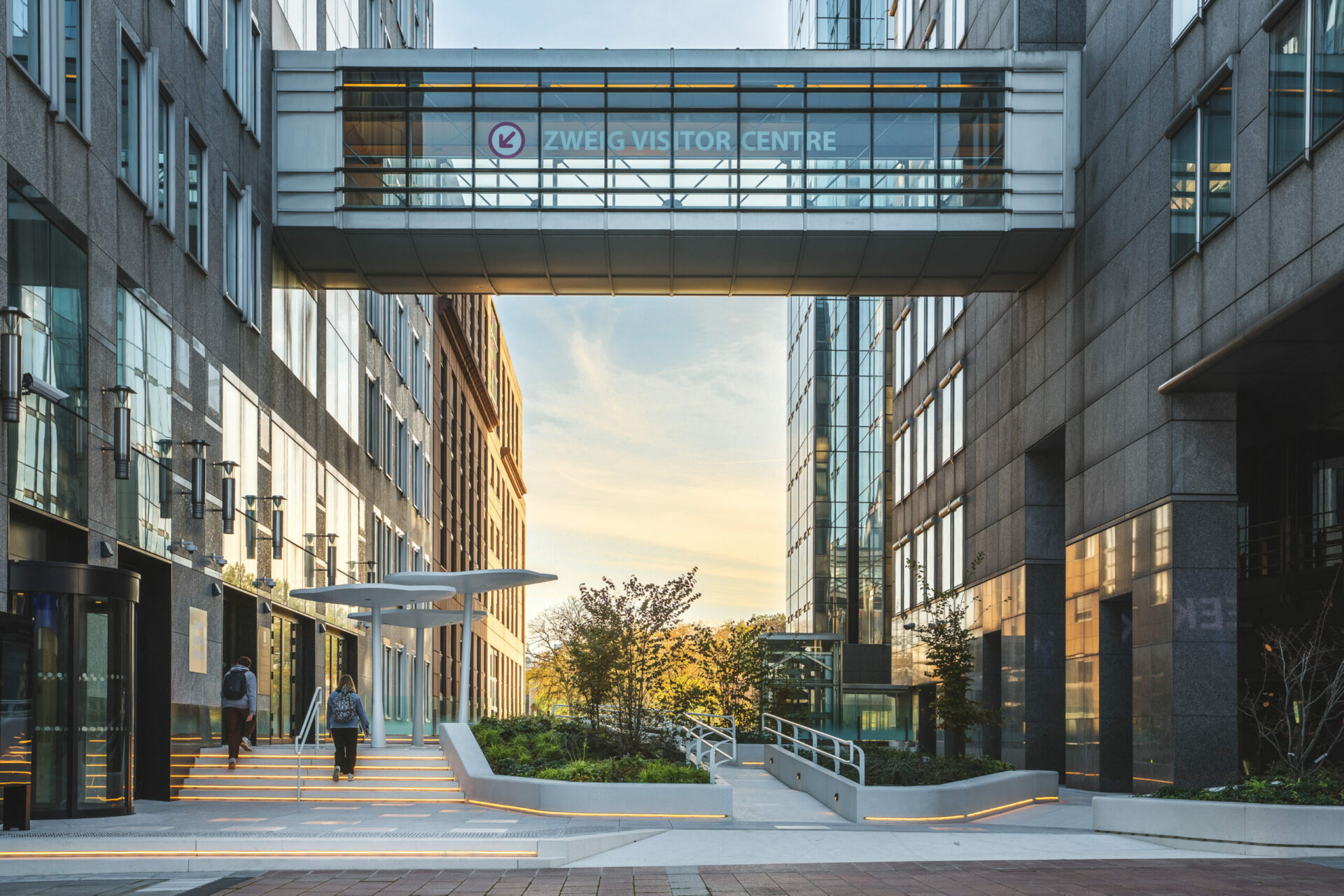
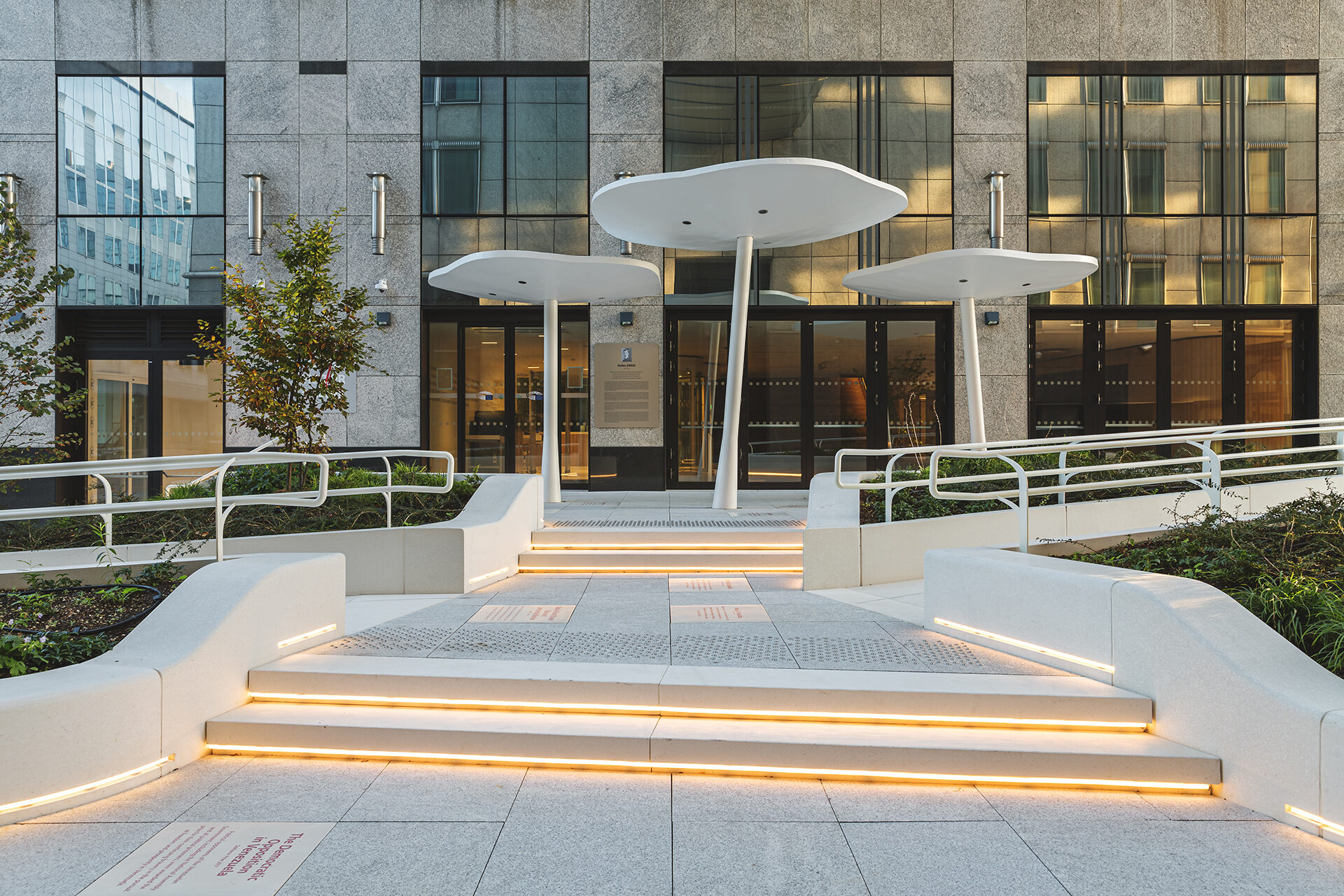
The visitor centre is located along a key axis of the capital, connecting Leopold Park to the Royal Palace, and is also strategically positioned at the heart of the various functions of the Parliament.
The project serves as the starting point of the visitor’s journey, which includes nearby buildings such as the Parlamentarium, the house of European History, and the European Parliament’s Hemicycle. As a true communication hub, it directs several thousand visitors per day to these sites.
The creation of a welcoming green esplanade in front of the main entrance (Sakharov lounge) provides a refreshing break within a predominantly mineral environment. The surface of this esplanade features commemorative plaques of the Sakharov prize laureates, hence its name.
The purpose of this new “Sakharov lounge” space is to create a more intimate area, acting as a bridge between Leopold park and the rest of the city, while marking the entrance to the visitor centre.
The project integrates into an existing office building (the Atrium building), which remained operational throughout the construction. This added an extra layer of complexity, particularly in accommodating the technical infrastructure within the intervention perimeter.
This project is a prime example of collaboration and integration between multiple areas of expertise at assar, as it combines architecture, interior design, and landscape architecture.
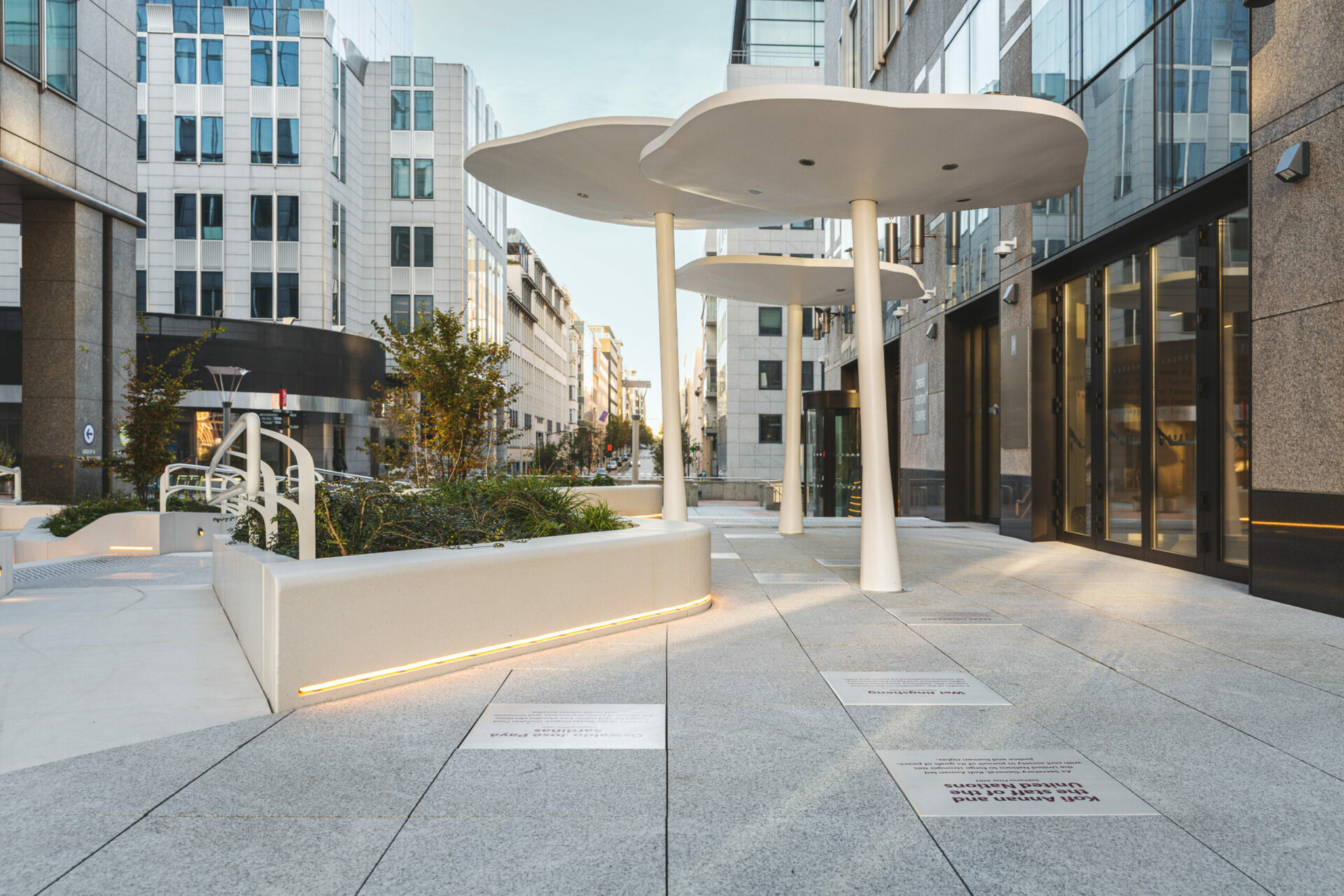
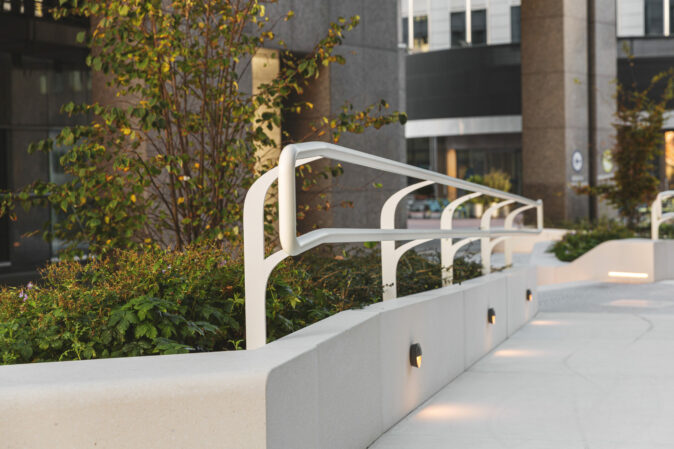
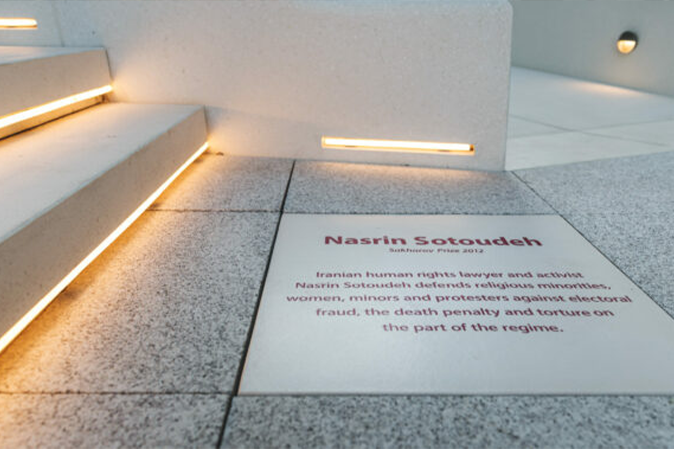
Visitors access the agora either from the underground Ardenne street or from the Sakharov esplanade located in front of the main entrance to the building. The interior and exterior design has been guided by visitor flow, resulting in a focus on curves to enhance fluidity and ensure visual porosity between the spaces.
Large white architectural concrete planters, which also serve as benches, have been strategically placed to accommodate the main flows to and from the points of interest along the visitor’s path. They provide a green respite while inviting visitors into the building. Three elegant canopies protect visitors from the elements. The levels have been raised to match those inside, and the green islands feature a ramp for persons with reduced mobility, as the Parliament aims to be an inclusive institution.
The space is designed to be commemorative and highly symbolic, highlighting the laureates of the Sakharov prize. This prize is awarded by the European Parliament to honor exceptional actions in favor of human rights. Currently, the names of the 47 laureates, along with brief descriptions, are inscribed on ceramic tiles. The project allows for the possibility of gradually replacing the granite slabs with ceramic tiles over time.
The sustainable aspect of the project is reflected in the integration of vegetation in the urban area, creating a true green oasis within the esplanade.
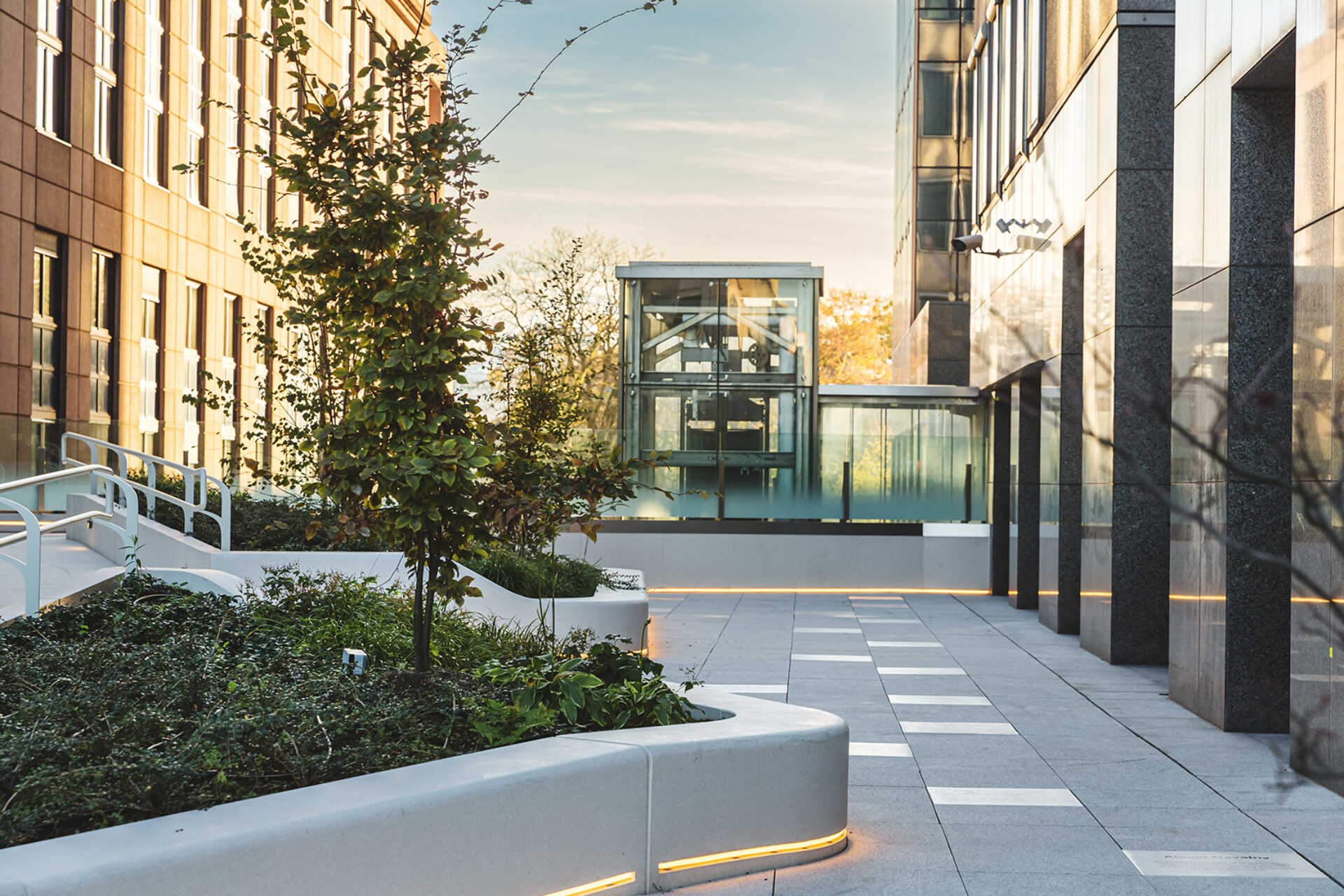
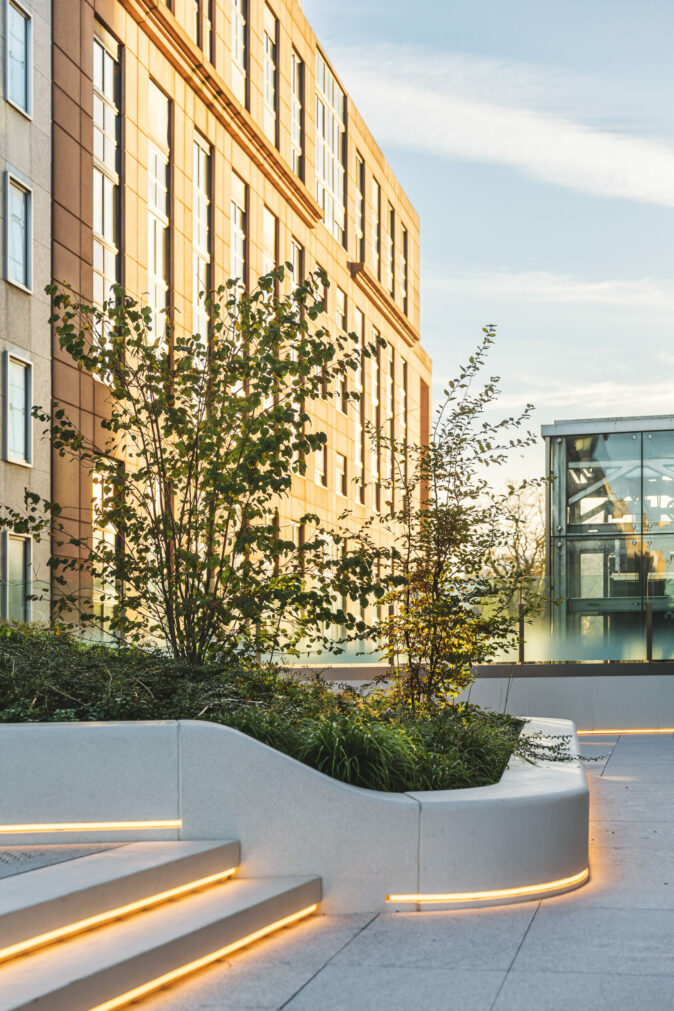
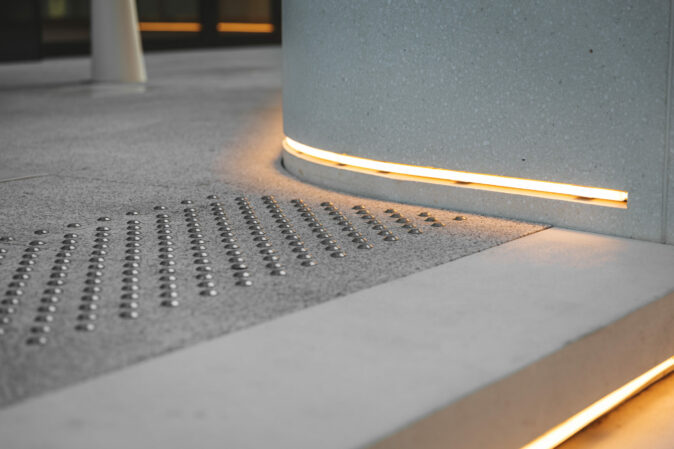
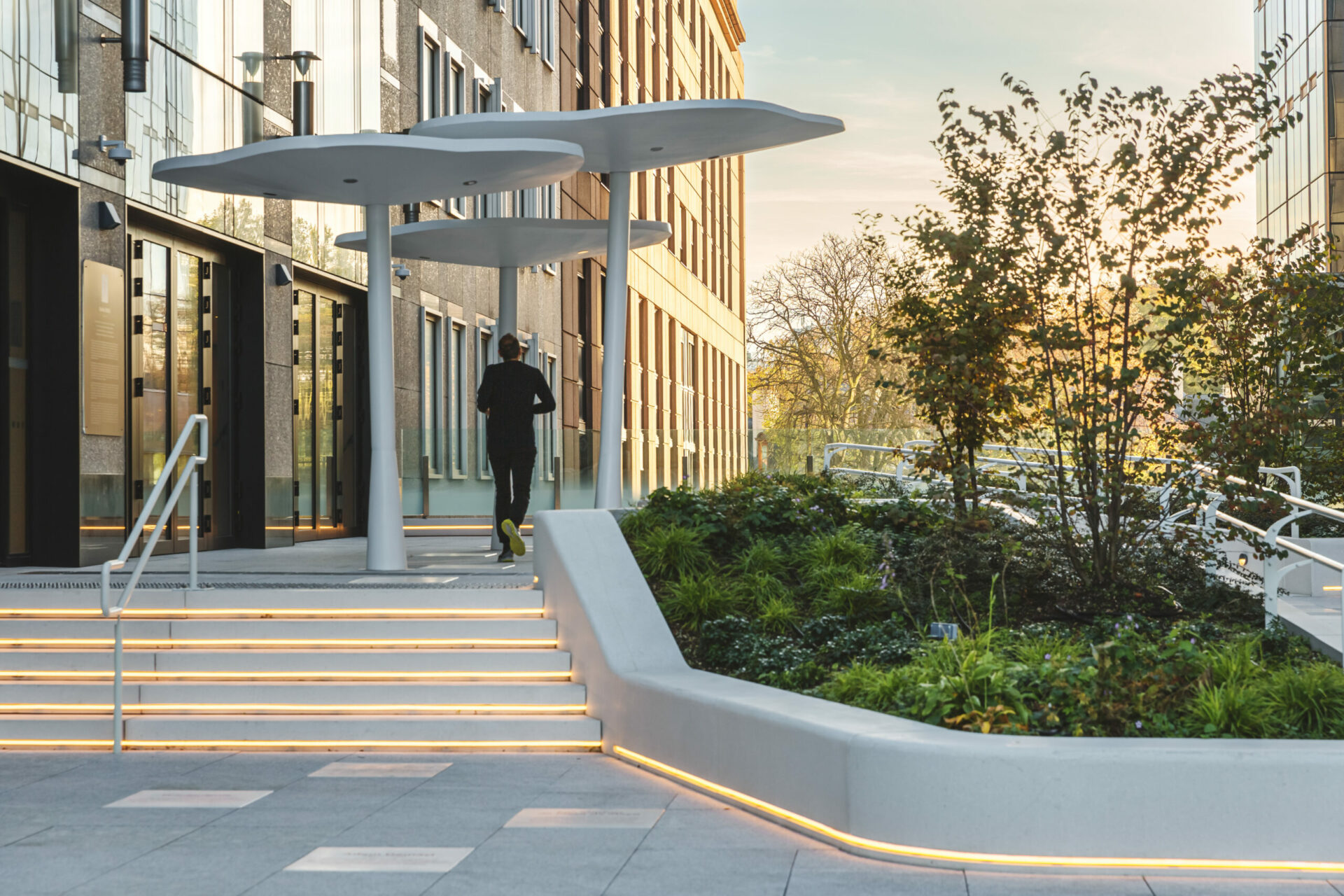
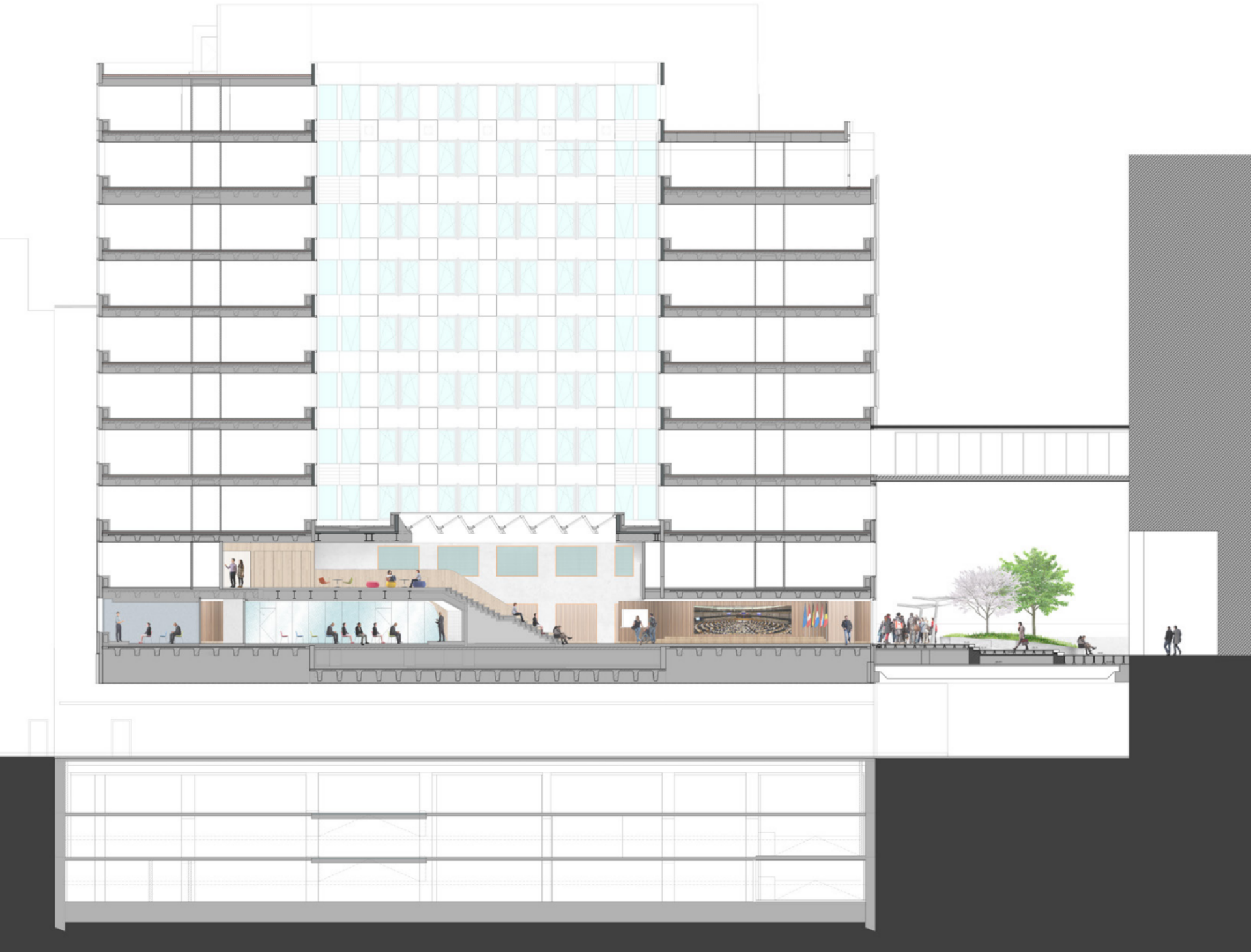
longitudinal section